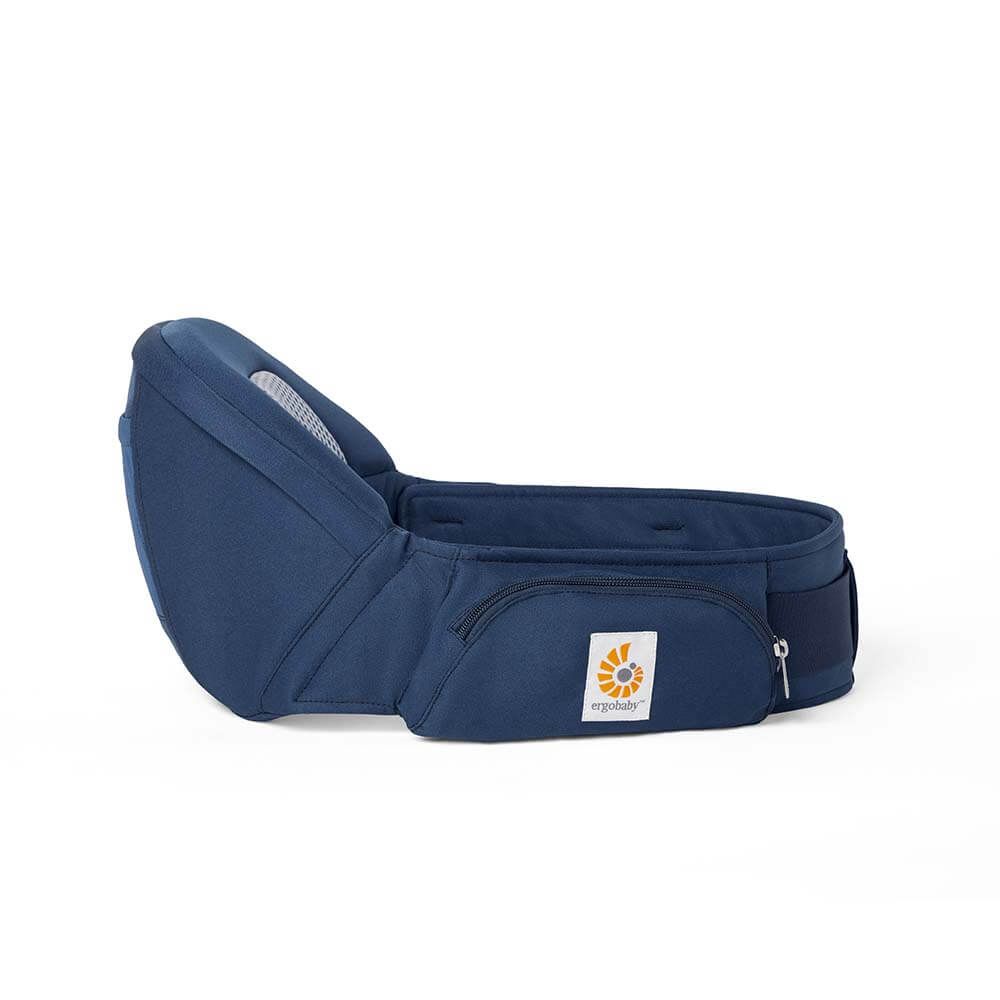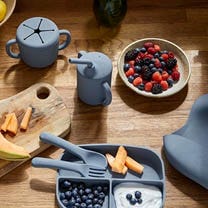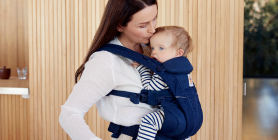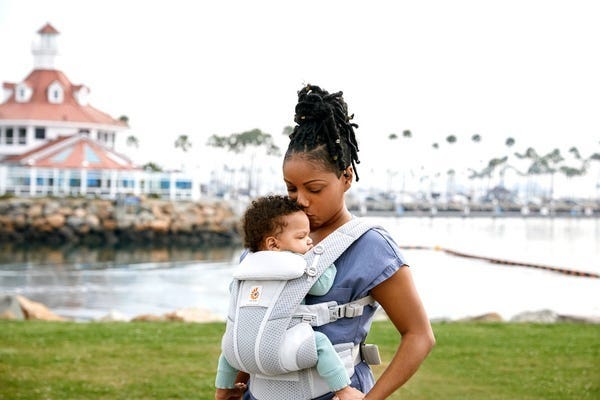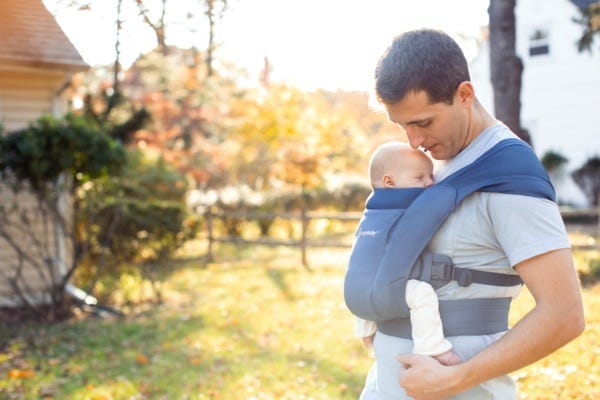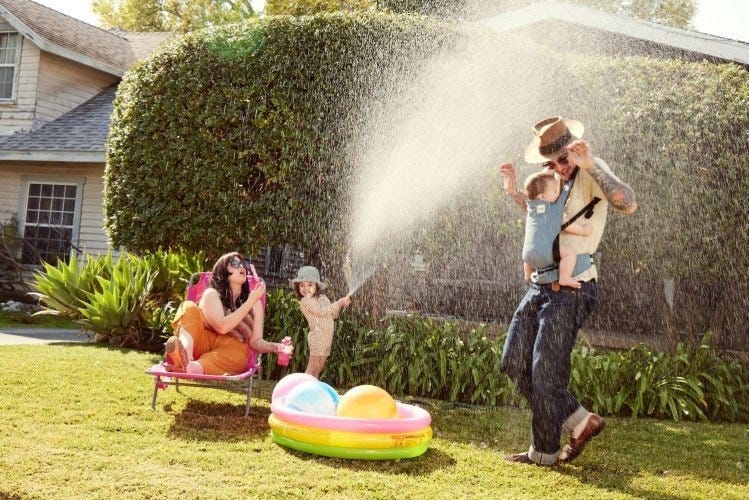
While most new mamas love breastfeeding time with their new little one, most also look forward to the day their partner can take part in feeding the baby, too (usually late at night so mom can get a little sleep!) So naturally a burning question on many new parents’ minds is: When is it okay to give my baby a bottle? Most experts agree that if things are going well with breastfeeding, and there is no indication or medical reason that your baby needs to be supplemented or fed with a bottle, it is in your breastfeeding and baby’s best interest to hold off for approximately 3 to 4 weeks before introducing bottle feeding. By following this general guideline, you will have well established your breastfeeding routine. After about a month, you will have let the baby dictate your milk supply before introducing something new. However, if you wait too long—usually more than 6 weeks—there is a risk that your baby may refuse the bottle. To feed your baby via a bottle, parents can use either expressed breast milk or formula. If you plan to use expressed breast milk, you will need to start pumping. The pumping timeline usually follows the same timeline as introducing a bottle, meaning if you don’t have a medical reason to supplement the baby and breastfeeding is going well, it is a good idea to let the baby dictate your milk supply in the first few weeks and hold off on pumping. If your baby is already acting as a great pump and then you add in more pumping on top of that, you run the risk of producing an over supply of breast milk which comes with its own set of issues. Once you get ready to introduce a bottle and you’re going to use your own breastmilk, you will need to begin pumping in order to produce milk for bottle feeding. In the place of any missed feedings where only a bottle is being used, I recommend you pump in order to protect your milk supply. Some mothers may notice that the first time they pump nothing comes out. I always warn new mamas not to panic. No results the first time out doesn’t mean you don’t have any milk. It may take a few days before your body gets used to letting your milk down for the pump. The reason is your body reacts differently to a pump than it does your own baby. Put it this way: You love your baby, you don’t necessarily love your pump. If your baby requires supplemental feeding before the 3 to 4 week mark, it would be wise to contact an IBCLC (a lactation consultant) who can help you set up a plan to protect your milk supply, introduce a bottle and help you to continue on your breastfeeding journey. Some mothers ask why they would want to introduce a bottle if they don’t have to go back to work and are planning to be with the baby all the time. While giving a bottle is definitely a personal choice, I usually always recommend introducing a bottle to baby and then continue to give one at least every few days so baby stays used to taking it. In my opinion, you just never know if you’ll be separated from your little one. Consider that while you may not have to return to work, you want to go out for an appointment that lasts longer than a few hours, or a date, or even have some alone time. And while you may plan your time away to coincide with baby’s feeding times, even the best laid plans can run longer than intended. I have found that when baby doesn’t want to eat from anything other than breastfeeding, it can cause very stressful situations for mom, baby and the caregiver. How to introduce a bottle. Unless your baby is used to a fast flow from your breast, most littles need a slow flow artificial bottle nipple to get started. Feed baby expressed breastmilk or formula in an amount appropriate for baby’s day of life. While some babies will refuse a bottle if they know mama is around, other babies may associate only feeding with mama and therefore will only take a bottle from her. It may take some experimenting to see how to get your baby started. Using a paced bottle feeding method is a great way to follow your infant’s feeding cues. By following baby’s cues, paced bottle feeding allows for the baby to dictate when they are done rather than having baby “finish the bottle.” You’ll want to have baby in an upright position and the bottle positioned in a horizontal 90 degree angle with just the nipple filled with milk. This allows for the baby to have to work for the milk, like at the breast, rather than having gravity dumping the milk into baby’s mouth. Encourage the baby to open wide by brushing the baby nose to chin with the nipple tip. Once baby opens wide, place the whole nipple in baby’s mouth so their lips rest on the base of the nipple. Once the baby is sucking, tip the nipple so no air is in it and milk fills the chamber. Allow the baby to pace her feeding. The baby shouldn’t looked stressed out when bottle feeding. How long does it take? A bottle feeding session should take approximately 15 minutes. If it’s going too fast, try to slow it down by pacing the feeding and allowing the baby to take some breaks in between sucking. Your baby will show you she is finished by slowing her sucks, releasing the bottle and generally looking satisfied. Remember, while most babies take to the bottle just fine, others may struggle. Don’t stress about it and give up right away. Seek help from a professional if your baby is refusing the bottle. Don’t try to starve baby into taking a bottle. Bottle feeding, like breastfeeding, should be an enjoyable experience for all involved.
Emotional Benefits of Getting Outside
Spending time in nature with your baby can strengthen the bond between you. The simple act of holding your baby close, feeling their warmth, and sharing new experiences together can create strong emotional connections. It’s also a wonderful way to reduce stress and improve your mood. When my littles were extra fussy, I’d take a walk around the neighborhood. Even though I don't live in an area with trails and surrounded by nature, simply behind outside changed everything. A little vitamin D does wonders!
Cognitive Development
Nature is a sensory wonderland for babies. The different sights, sounds, and smells can stimulate your baby’s senses and promote cognitive development. Watching leaves rustle, hearing birds chirp, and feeling the texture of a tree bark can all contribute to their learning and development.
All About Baby Carriers for Nature Adventures
Choosing the Right Baby Carrier
When it comes to selecting the best baby carrier for summer adventures, there are several options to consider.
Types of Baby Carriers:
- Wraps: Perfect for newborns, providing a snug and secure fit.
- Slings: Ideal for quick and easy use, offering good ventilation.
- Soft Structured Carriers: Versatile and comfortable for both parent and baby, suitable for longer trips.
Factors to Consider:
- Baby’s Age and Weight: Ensure the carrier is appropriate for your baby’s size and weight. For example, Ergobaby’s Embrace Newborn Carrier is perfect for the fourth trimester where baby is small and you’re looking for an easy way to stay close. As they grow, you’ll want to upgrade to an all-position carrier that’s meant for growing babies.
- Parent’s Comfort and Ergonomics: Look for carriers with padded shoulder straps and lumbar support if you’re planning on longer outings.
- Ease of Use: Choose a carrier that is easy to put on and take off.
- Climate and Breathability: Opt for carriers made of breathable fabrics to keep you and your baby cool in hot weather.
Safety Tips:
- Proper Positioning: Ensure your baby is seated correctly, with their legs in an "M" position and their head should be close enough to kiss.
- Checking for Wear and Tear: Regularly inspect your carrier for any signs of damage.
- Ensuring Adequate Support: Make sure the carrier provides proper support for your baby’s head and neck.
Exploring Nature with a Baby Carrier
Ideal Spots for a Nature Walk with Baby
- Parks and Gardens: Great for leisurely walks and picnics.
- Nature Trails and Forests: Perfect for more adventurous outings.
- Beaches and Lakesides: Wonderful for enjoying the water and sand, with the right carrier.
Activity Ideas
- Hiking: Enjoy a scenic hike with a hiking baby carrier that offers support and storage.
- Bird Watching: Use your carrier to keep your baby close while you explore and observe wildlife.
- Picnics: A carrier can free up your hands, making it easier to carry picnic supplies.
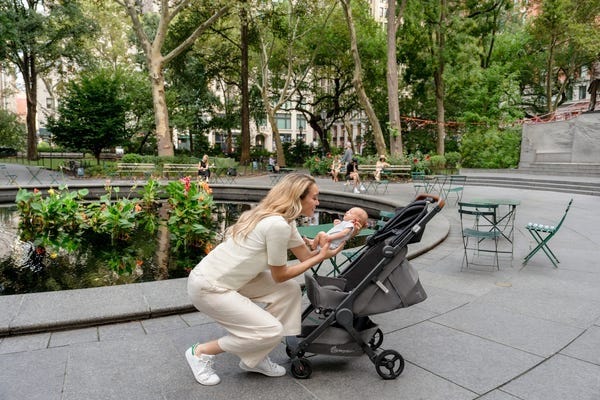

Advantages of Using Strollers for Nature Adventures
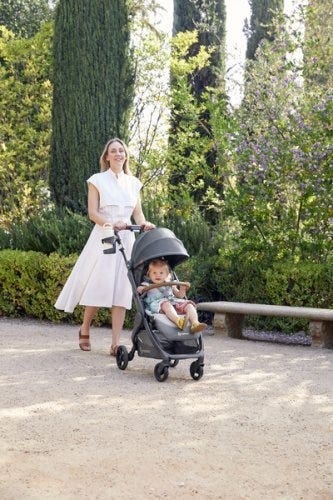

While baby carriers are fantastic for mobility and closeness, depending on the adventure of choice you might want to be a stroller along too.
There are a LOT of baby stroller options on the market. So we understand how confusing it can be to choose the one that’s right for your family. Not only are there a variety of brands, but a variety of strollers that serve different purposes.
There are a few types of strollers on the market:
- Full-sized stroller: This is typically the stroller parents thing of buying for all its versatility.
- Lightweight or umbrella stroller:These compact strollers are perfect for on-the-go adventures.
- Jogging stroller: Designed for parents who want to combine fitness with outdoor adventures.
- Double stroller: Designed for parents with multiple kids, especially twins.
- Car seat carrier: These strollers connect to a specific car seat. We don't typically recommend these as they can be unsafe for baby and uncomfortable for parents who are pushing.
Learn more about the types of strollers and which one would be best for you.
Benefits of Bringing a Stroller
- Storage Space for Gear: Ample room for carrying all your essentials like a diaper bag, beach toys and more.
- Shade and Weather Protection: Built-in canopies to shield your baby from the sun when they are lounging.
- Options: If you have more than one kid, you can stroll with one and carry the other. Or, if you’re getting warm or your little one is getting fussy, you can switch up their position from stroller to carrier or vice versa.
Safety Tips for Strollers
- Ensure your stroller is in good working condition. Make sure buckles are still buckling and that there are no rips or holes that could compromise your baby’s safety.
- Use sunshades or bug nets to protect your little one’s skin.
- Securing the baby properly: always buckle up your baby for safety even if you think they are old enough to go without the buckle.
Combining Baby Carriers and Strollers
For the ultimate flexibility, consider using both a baby carrier and a stroller on your outings.
Combining both options allows you to adapt to different situations. Use the carrier for more rugged trails and switch to the stroller for smoother paths or when your baby needs a nap.
Transition Tips
- Smooth Transitions: Plan stops where you can easily switch from carrier to stroller.
- Pack Light: Only bring essentials to make transitions easier.
Tips for a Successful Adventure
Planning Ahead
- Route Planning: Choose baby-friendly trails and parks. Check local mom groups or outdoor groups and get recommendations for the best outings for kids.
- Check Weather Conditions: Avoid extreme heat or unpredictable weather. Even with our most breathable carriers, when it’s hot, it’s hot. And having two bodies against each other in the heat will be naturally hot and sticky already.
- Packing Checklist: Include diapers, snacks, water, sunscreen, and a first-aid kit. These all-position carriers have storage pockets where you can fit some of the items easily!
- Stay Hydrated and Nourished: Pack healthy snacks to keep energy levels up and bring plenty of water for both you and baby.
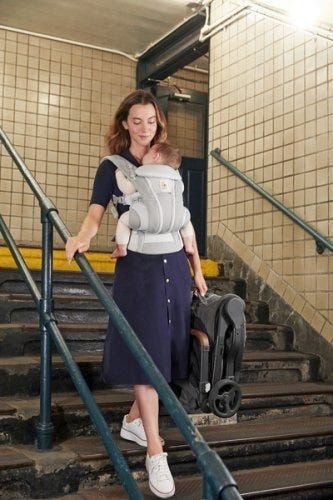

Summer adventures with your baby are a wonderful way to create lasting memories and enjoy the beauty of nature together. From baby carriers to strollers, Ergobaby products are designed to provide comfort and ease for both you and your little one. So, gear up, get outside, and explore the world with your baby by your side.
Ready to embark on your own summer adventures? Check out Ergobaby’s range of baby carriers and strollers to find the perfect match for your family’s needs. Visit our website today and start planning your next outdoor excursion!





